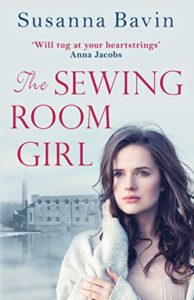It’s best if I come straight out with it.
I’m a thief.
Don’t be shocked. It’s because I used to be a teacher. I can’t speak for secondary school teachers, but, as a former infant teacher, I can assure you that in primary schools, the staff are a bunch of thieves.
You see a display in another classroom – in a library – in a gallery – a shop – on Pinterest – anywhere at all – and your first thought is: I could adapt that idea.…
You see another teacher’s lesson and you think: I never thought of doing it that way. I’ll have a go at that. You open birthday and Christmas cards, thinking: Could 6-year-olds make this?
So, yes, I’ve been pinching ideas for years. I’m no longer a teacher, but I haven’t lost the habit. I’m still on the look-out for good ideas, as all writers are.
And they can pop up in the oddest places. Listening to This Morning on Radio 4 last autumn, I heard a piece about the criminal activity of “crossing county lines,” which inspired a plot-thread in a novel set in 1922. Likewise, an unexpected clause in a family will some years ago was adapted to pile all kinds of difficulties onto Greg Rawley’s financial problems in The Poor Relation.
 The thing about writers gathering ideas is that you have no control over what will spark off an idea or how that idea will grow. Readers often ask, “Where do you get your ideas from?” I know that some writers have a jokey answer about buying ideas in the corner shop; but the real answer is that they come from all over the place – an overheard snippet of conversation, a photograph, something on the news, something that happens to you or a friend…. But what isn’t generally understood is that the idea is just a spark, not a whole book. You don’t lift your entire plot from real life. A single idea, or a couple of ideas, can be all it takes to make the plot grow. And the final plot will very probably bear no resemblance whatsoever to the original spark.
The thing about writers gathering ideas is that you have no control over what will spark off an idea or how that idea will grow. Readers often ask, “Where do you get your ideas from?” I know that some writers have a jokey answer about buying ideas in the corner shop; but the real answer is that they come from all over the place – an overheard snippet of conversation, a photograph, something on the news, something that happens to you or a friend…. But what isn’t generally understood is that the idea is just a spark, not a whole book. You don’t lift your entire plot from real life. A single idea, or a couple of ideas, can be all it takes to make the plot grow. And the final plot will very probably bear no resemblance whatsoever to the original spark.
Take The Sewing Room Girl. As I said, I used to be a primary school teacher. The most important job done by any school is safeguarding the children in its care. To this end, teachers undergo regular training sessions to help them understand what they need to be aware of.
Ten years ago, my school gave a training day to safeguarding. Sad to say, much of the training on these occasions is based around discussing real cases. On this training day, an example was given of the way in which a particular adult had kept control of a vulnerable child. Let’s just say that a certain piece of household technology was used as a means of keeping the child in a state of fear.
Out of that single idea came Juliet’s story in The Sewing Room Girl. I should like to make it clear that the household object in the real example did not exist in the 1890s, the time when the book is set. Neither did anything from the real-life case appear in any form whatsoever in the book. But hearing of that frankly appalling and distressing case sparked off the original idea, which over time grew into a complete novel.
Another feature of these ideas that spark off books is that they don’t always get used. The single spark that started me writing The Deserter’s Daughter was an idea for something that would happen in the plot. But no sooner had I created the Armstrongs’ antiques shop in the book than I realised I couldn’t possibly use the original plot-point because the shop was just too posh!
But that’s the other thing about writers’ ideas. Nothing is ever wasted. You will be able to read that particular plot-point in a book that will be published next year….

